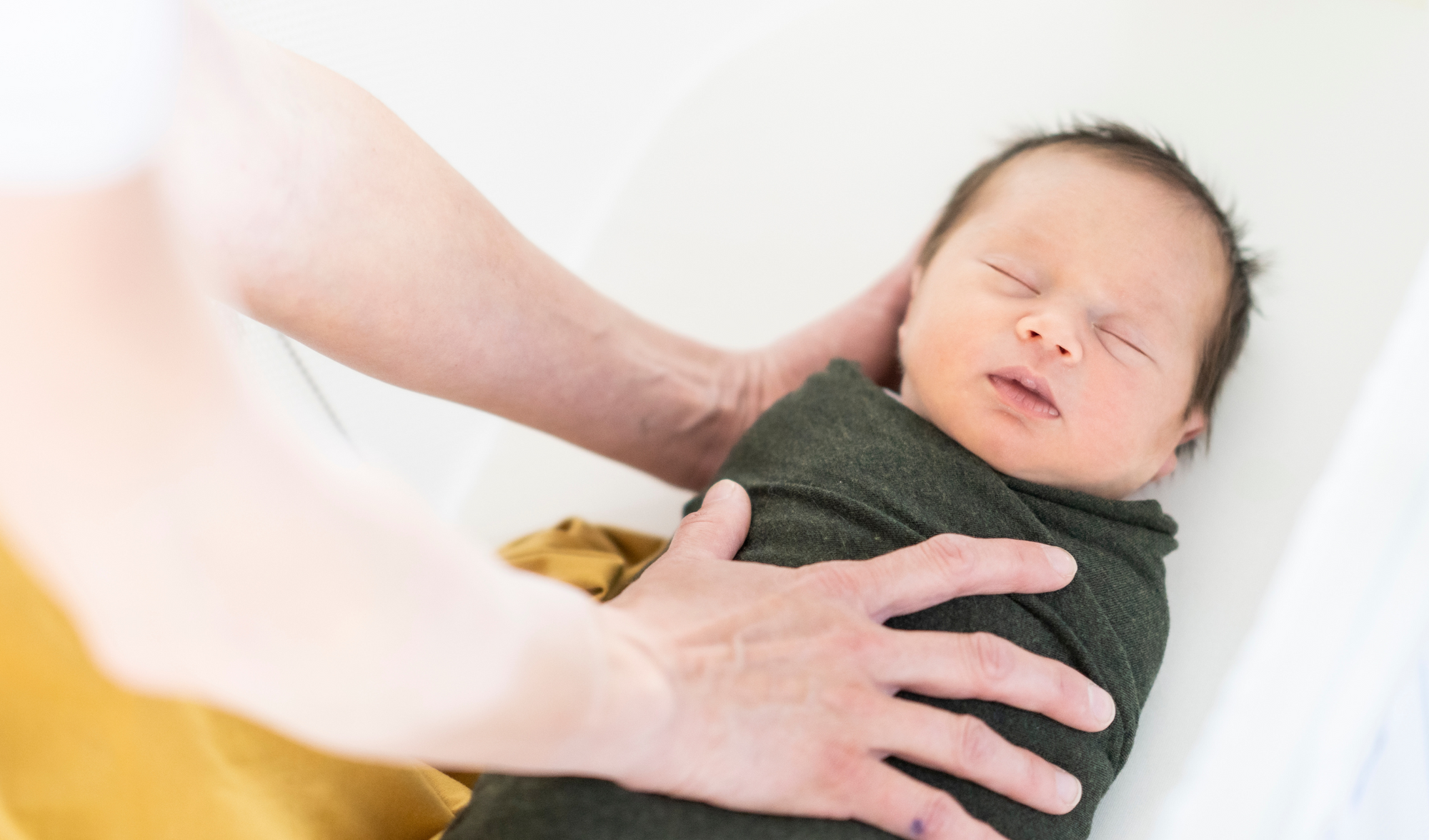Your baby has been growing and learning for a few months now, and with each passing day, is becoming more mobile and alert than ever before. Rolling over on his or her own will be one among your child's early developmental milestones. Continue reading to learn when your baby might begin rolling over and how to encourage it with play.
How Will My Baby Learn To Roll Over?
Newborn To Two Months
Giving your baby tummy time from the beginning will aid in the development of the muscles they will need to learn to roll over. Tummy time allows your baby to use their arms and legs while also strengthening their head, neck, and upper body muscles. Initially, some babies dislike being on their tummies. For your baby, being in this new position can be a confusing experience. If this happens, try distracting them with a toy or getting down to their level and offering plenty of encouraging smiles and talk.
Until your little one gets used to the feeling, you could try propping them up with a small, rolled-up towel under their arms. Alternatively, place your baby on your breast or forearm, with their head securely supported. Stop the activity and try again later if your baby is still agitated
Three Months To Four Months
When you put your baby on their belly at around three months, they may be able to use their arms to lift their head and shoulders off the floor. Your baby can build the muscles they'll use for rolling over with this small push-up. Your baby might wow you by rolling from their back to their front, or vice versa. Place a toy just out of reach and slightly above your baby to encourage them to push up with their arms. This will tempt your little one to straighten their arms to get a better view of the item. You might also try holding a toy a short distance away at their eye level. This will motivate your baby to push upwards and try to grab the item.
Five Months To Seven Months
To lift their chest off the ground, your baby may be able to lift their head, push up on their arms, and arch their back. Your little one can also kick their legs and swim with their arms while rocking on their stomach. Your baby’s muscles are strengthened as a result of all of this working out. They are likely to have learned to roll over in both directions by the time they are six or seven months old.
It's possible that your baby will never truly roll over. They might skip that step and go straight to sitting and crawling or shuffle their feet. Your baby is progressing well as long as they continue to learn new abilities and show an interest in moving about and exploring.
What Will My Baby Do Once They Can Roll Over?
Your baby's muscles for rolling over are mostly the same as those they use to crawl and sit unassisted. You can help your baby learn a new skill by playing with them. Encourage them to roll towards you by jiggling a toy at their side. Applaud their efforts and smile if they succeed to roll. Because this new body movement can be unsettling, your baby may need your nearby for reassurance.
These other hints will also be beneficial:
- Every day, spend a lot of time on the floor with your baby, playing in various positions.
- Toys that are fun to play with and draw their attention, such as noisy toys and toys with vivid colours and flashing lights, should be used. To encourage your little one to move, place them just out of reach of these items.
- Allow your baby plenty of opportunities to practise by placing them on their back and tummy and assisting them in rolling over.
Encourage your baby to roll in both directions as they begin to roll. Your baby will be able to grow balanced muscles on both sides of their body as a result of this. Use a favourite toy to encourage your baby to roll in the direction they like least.
Rolling over is a milestone that will most likely entertain you both, and it can be thrilling to see your baby discover this new skill. Once your baby starts wriggling and rolling, you may need to keep a hand on them during nappy changes.
My Baby Is Six Months Old & Can't Roll Over Yet. Should I Be Concerned?
Babies develop abilities at varied rates, with some taking longer than others to learn to roll over. Mention it to your health visitor if your baby hasn't figured out how to roll over by the time he's six or seven months old, and hasn't progressed to sitting, bottom-shuffling, or crawling.
If your baby was delivered prematurely (before 37 weeks), keep in mind that they’re more likely to leave out this and some other developmental milestones.
Find out when your baby is likely to reach the following physical milestones:


